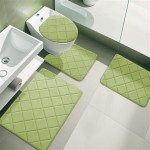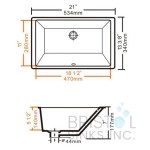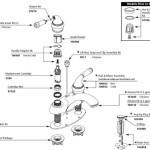How to Stop a Bathroom Faucet from Dripping
A dripping faucet is a common household problem that can be frustrating and lead to water waste. While it may seem like a minor issue, a dripping faucet can waste gallons of water over time, costing you money. Additionally, the constant sound of dripping can be annoying and disruptive.
Fortunately, fixing a dripping faucet is often a simple and inexpensive process that can be done by most homeowners. Here are step-by-step instructions on how to stop a bathroom faucet from dripping:
1. Shut off the Water Supply
Before you start working on the faucet, you need to turn off the water supply. There are usually two valves under the sink that control the hot and cold water. Turn both valves clockwise until they are completely closed.
2. Remove the Aerator
The aerator is a small device attached to the end of the faucet that helps to create a more even flow of water. Unscrew the aerator using a pair of pliers or an aerator wrench. If the aerator is clogged, clean it with a toothbrush or soak it in vinegar for a few hours.
3. Remove the Handle
There is usually a small screw holding the handle in place. Remove the screw and pull the handle straight up. If you have a two-handle faucet, you will need to repeat this process for both handles.
4. Replace the Washer
The washer is a small rubber or plastic seal that creates a watertight seal between the faucet stem and the faucet body. Over time, washers can wear out and start to leak. To replace the washer, simply remove the old washer and replace it with a new one. Make sure that the new washer is the correct size and type for your faucet.
5. Reassemble the Faucet
Once you have replaced the washer, reassemble the faucet in reverse order. First, replace the handle(s), then screw on the aerator. Finally, turn on the water supply and check for leaks.
6. Troubleshooting
If you still have a dripping faucet after following the above steps, there may be another issue that needs to be addressed. Here are some common causes of dripping faucets and their solutions:
- Worn out O-rings: O-rings are small rubber seals that create a watertight seal between different parts of the faucet. Over time, O-rings can wear out and start to leak. To fix this, you will need to replace the worn out O-rings with new ones.
- Damaged faucet seat: The faucet seat is the surface that the washer seals against to create a watertight seal. If the faucet seat is damaged, it can cause the faucet to leak. To fix this, you will need to replace the damaged faucet seat with a new one.
- Loose faucet stem: The faucet stem is the part of the faucet that turns on and off the water. If the faucet stem is loose, it can cause the faucet to leak. To fix this, you will need to tighten the faucet stem.
Conclusion
Fixing a dripping faucet is a relatively simple and inexpensive task that can be done by most homeowners. By following the steps outlined in this article, you can stop a dripping faucet and save water and money.

How To Fix A Bathroom Faucet 14 Steps

How To Fix A Bathroom Faucet 14 Steps

5 Reasons Your Faucet Is Dripping Water How To Fix It

Simple Ways To Fix A Leaky Delta Bathroom Sink Faucet

How To Stop A Dripping Bathtub Faucet Plumbing Repair Replacement And Maintenance

5 Reasons Your Faucet Is Dripping Water How To Fix It

Faucet Repair How To A Leaky Bath

How To Fix A Dripping Moen Faucet Howtolou Com

Water Dripping From Faucet Why And How To Fix

How To Fix A Leaky Faucet True Value







